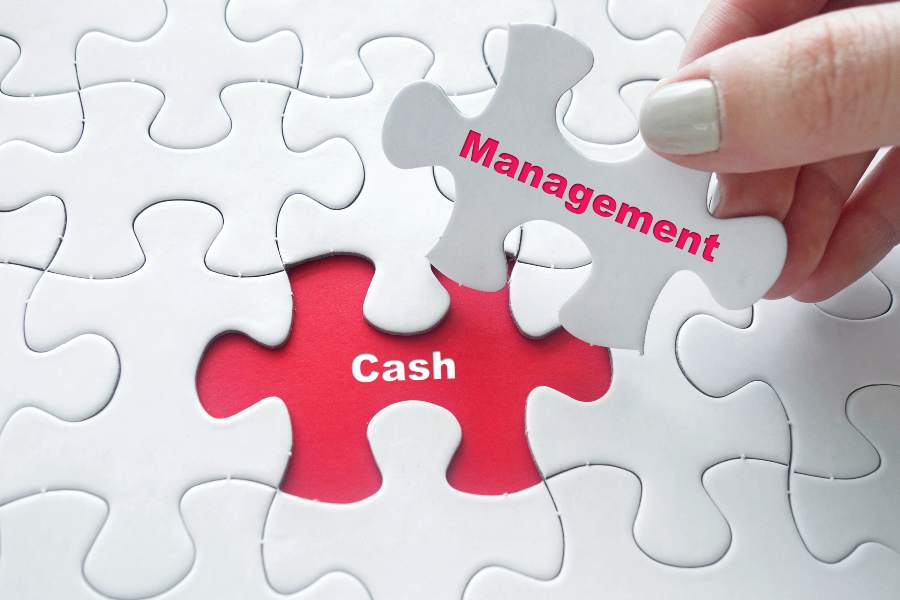An outstanding check on a bank reconciliation is a check that has been written and recorded in your company’s books but has not yet cleared the bank. Essentially, the cash balance has been reduced, but the bank has not deducted the amount from your account balance. This discrepancy occurs because of the time gap between when the check is issued and when the recipient deposits it. During this time, the check remains outstanding.
Key Takeaways:
- Outstanding checks cause a discrepancy between the company’s cash balance and the bank’s balance, which can be spotted by reviewing records and bank statements.
- The delay in clearance is typically due to the time it takes for the recipient to deposit the check or for the bank to process it.
- Reconciling outstanding checks is important for maintaining accurate financial records and ensuring the reported cash balance reflects its true financial position.
How an Outstanding Check Works
During the period of a check’s issuance and clearance, it is considered outstanding. This period can vary from a few days to several weeks or even months, depending on factors like mail delivery time, the payee’s actions, and the efficiency of the banking system.
The life cycle of an outstanding check typically involves the following stages:
- Issuance: The check is written and dated by the payor (the small business) who records the transaction in their check register or accounting system.
- Delivery to the payee: The check is physically or electronically delivered to the payee.
- Payee’s decision: The payee decides when to deposit or cash the check, which may be influenced by various factors like convenience, need for funds, or trust in the payor.
- The payee may be concerned about the risk of insufficient funds in the payor’s account. The payor may have a reputation for issuing checks that tend to bounce or even that they might issue a stop payment order, instructing the bank not to process the check.
- Deposit or cashing: The payee presents the check to their bank to either be deposited or cashed. When the payee deposits the check, the amount is added to their bank account. If they decide to cash it, they will have the money in hand right away.
- Bank processing: The payee’s bank sends the check through the clearing system, which may involve multiple banks and clearinghouses A clearinghouse is a financial institution that processes and settles transactions between banks, like checks or electronic payments. It verifies and matches payment details, ensuring accuracy and reducing errors. This system helps banks exchange funds efficiently and securely. , depending on the location and type of check.
- Verification and funds transfer: The payor’s bank verifies the check’s authenticity, checks for sufficient funds in the payor’s account, and authorizes the funds transfer.
- Clearing and posting: The funds are transferred from the payor’s account to the payee’s account, and the check is marked as cleared or paid.
- Reconciliation: The cleared check appears on the payor’s bank statement, allowing them to reconcile their records and confirm the payment. Some banks return the checks together with the bank statement.
Example of an Outstanding Check on a Bank Reconciliation
Here’s a simple example of an outstanding check on a bank reconciliation:
On August 30, Butterfly Industries wrote a check for $500 to a supplier for office supplies. The company recorded this check in its books, reducing its cash balance by $500. However, as of September 10, the supplier has not yet deposited the check. When Butterfly Industries receives its bank statement on September 10, the $500 check doesn’t appear as a cleared transaction.
The book balance as of September 10 is $10,000, while the bank balance is $10,500, and the $500 check is identified as an outstanding check. In the bank reconciliation, the $500 check is deducted from the bank statement balance:
- Bank Statement Balance: $10,500
- Less: Outstanding Checks ($500)
- Adjusted Bank Balance: $10,000
Now, the adjusted bank balance matches the company’s book balance, indicating that the difference was due to the outstanding check.
Risks and Benefits of Outstanding Checks
There are a few associated risks and benefits of outstanding checks, depending on whether you are the check issuer or recipient. Let’s go over each below.
How to Minimize Outstanding Checks
By following our tips below, you can significantly reduce the number of outstanding checks in bank reconciliation and minimize the associated risks and inconveniences.
For the Issuer
Minimizing reconciling items can make the bank reconciliation process faster for the check issuer. Here are some ways check issuers can minimize outstanding checks:
- Opt for electronic payment methods. Electronic payment methods—like ACH transfers, online bill pay, or debit cards—offer faster processing times and reduce the risk of checks being lost or delayed.
- Mail checks promptly to avoid delivery delays. If you must issue a check, mail it promptly to avoid delays in delivery. Let payees know when to expect their checks and encourage them to deposit them promptly. This can help reduce the time checks remain outstanding.
- Use certified mail or tracking for important payments. Using certified mail or tracking services for important payments is a good idea to ensure that they are received. By sending this way, you’ll be provided with a tracking number that allows you to follow the remittance and troubleshoot any potential delivery issues.
- Perform bank reconciliations. Reconcile your bank accounts frequently to avoid outstanding checks and ensure your records are accurate.
- Use Positive Pay services. Some banks offer Positive Pay services, which allow you to provide them with a list of issued checks. The bank will then only clear checks that match the information of your list, reducing the risk of fraud.
For the Payee
Here are some ways that the payee can minimize outstanding checks:
- Deposit checks immediately. Deposit or cash checks as soon as possible to delays and potential issues like stale-dating or loss.
- Use mobile deposit. Many banks offer mobile deposit services, allowing you to deposit checks using your smartphone. This is a convenient option for quick deposits.
- Set up direct deposit. If you receive regular payments, ask the payor to set up direct deposit to your bank account. This eliminates the need for checks altogether.
General Tips
Overall, here are some general tips that issuers and payees can observe:
- Keep a detailed record of all issued checks, including the date, amount, payee, and check number to track outstanding checks in bank reconciliation.
- Use online banking to regularly monitor account activity and identify cleared checks.
- Contact your bank immediately if you have concerns about a specific check or need to stop payment.
Our related resources:
Frequently Asked Questions (FAQs)
The primary difference between an outstanding check and a bounced check lies in their status and the underlying reason for the discrepancy in a bank reconciliation. An outstanding check is a check that has been written and recorded in the company’s books but hasn’t yet cleared or been processed by the bank. A bounced check, on the other hand, is a check that the bank has refused to honor or process due to insufficient funds in the account.
Performing a bank reconciliation is the most comprehensive way to identify outstanding checks. Compare your check register or accounting records with your bank statement to identify any checks that haven’t cleared. Keep in mind that it typically takes a few business days for a check to clear, depending on the bank and the type of check.
There are a few ways to clear an outstanding check, depending on the situation and your preference. You can either wait for the check to clear naturally, which is the simplest approach. If the check was recently issued, give it some time to be deposited and processed by the bank. Or, if you’re concerned about a check taking too long to clear, reach out to the recipient to confirm they’ve deposited it. If you suspect it has been lost or stolen, you can request a stop payment from your bank.
If an outstanding check remains uncashed, it can become stale-dated, meaning the bank might refuse to honor it after a certain period, typically six months. This would require the issuer to void the check and issue a new one if payment is still desired. In the longer term, if a check remains uncashed for an extended period, usually one to five years depending on state laws, it can be considered unclaimed property. The bank or company holding the funds is obligated to report this to the state, which will then attempt to locate the rightful owner. If unsuccessful, the state may claim the funds.
Bottom Line
An outstanding check represents a payment that a company has already accounted for in its books but has not yet been processed by the bank. It’s essential to include outstanding checks in bank reconciliation to ensure that the company’s records accurately reflect its cash position. Overall, while outstanding checks are a normal part of the payment process, it’s important to be aware of their potential consequences and manage them effectively. By maintaining good recordkeeping, reconciling accounts regularly, and communicating with payees, you can minimize the risks and ensure smooth transactions.


